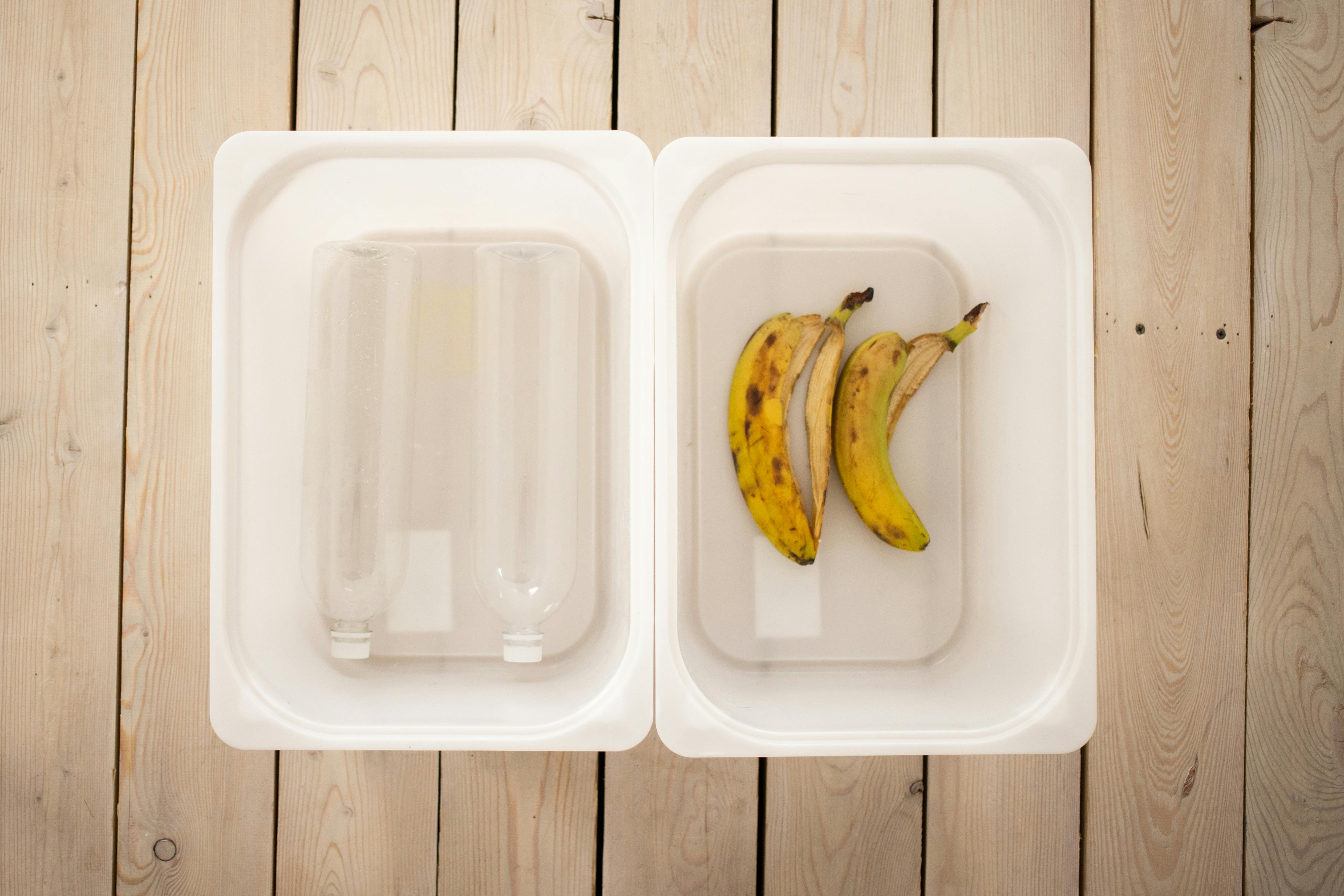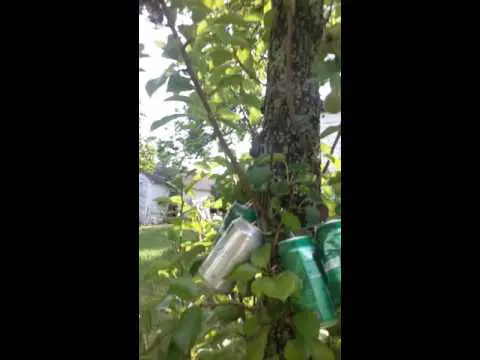Protecting fruit trees from raccoons is an important part of maintaining a healthy and productive home orchard. Raccoons are highly persistent and determined animals that can cause considerable damage to fruit trees, as well as other parts of the garden. Fortunately, there are some simple steps that can be taken to prevent raccoons from raiding your trees. These include installing fencing around the tree, using deterrents such as lights and noise makers, and keeping the area around the tree free of debris and potential hiding places for raccoons. With these measures in place, you can help ensure that your fruit trees remain safe from raccoon intruders.To deter raccoons from eating fruit trees, you can take a few steps to try to make the area less attractive to them. First, clear away any debris around the tree that may give them places to hide or climb on. Then, place chicken wire or metal flashing around the trunk of the tree to create a barrier that raccoons cannot easily climb over or dig under. Additionally, you can spread strong-smelling substances (such as ammonia) around the base of the tree or hang strips of fabric soaked in ammonia in the branches. You can also use motion activated lights and water sprinklers, which will startle raccoons when they approach and deter them from returning. Finally, be sure to pick up any fallen fruit from the ground around your tree to avoid attracting raccoons in the first place.
Identifying Damage Caused by Raccoons
It is not always easy to identify damage caused by raccoons in your home. Raccoons are very sneaky and can cause a lot of damage to property without you even realizing it. It is important to be aware of the signs that may indicate raccoon activity in or around your home. Here are some tips that can help you identify if raccoons have caused damage to your property:
Look for Tracks: Raccoons have five toes on their front paws and four on their rear paws. When tracks are visible, it can help in identifying if the animal causing the damage is a raccoon or not.
Examine Entry Points: Raccoons often enter homes through chimneys, roof vents, or roofs that have been weakened or damaged. Inspect these areas for any signs of entry such as torn shingles, holes, or gaps. Make sure to also check for claw marks and scratches around these areas as well.
Check for Chewed Items: Raccoons often chew through electrical wires, insulation, and other materials as they search for food or build nests inside walls or attics. Look out for chewed items in these areas as this could indicate raccoon activity.
Inspect Trash Cans: If you keep trash cans outside of your home, check them regularly for any signs of disturbance such as footprints, overturned lids, or other signs of rummaging activity that may indicate a raccoon has been searching through them.
Look Out For Droppings: Droppings from raccoons can be somewhat large and usually contain seeds from plants they have eaten. If you spot droppings near entry points into your home then it is likely a sign that a raccoon has been present recently and may be living inside your walls or attic space.
By following these tips you should be able to identify if a raccoon has caused damage to your home and take the necessary steps needed to protect yourself from further damage from these pests.
1. Trim Nearby Trees and Shrubs
Raccoons are excellent climbers and often use nearby trees and shrubs to climb up to fruit trees. To prevent them from doing this, regular trimming of trees and shrubs near fruit trees is essential. Cut branches that may provide access for raccoons to climb up the fruit tree. Additionally, keep any other ladders or structures away from the tree as these can also provide a pathway for raccoons.
2. Install Barriers
Barriers such as electric fences, netting, and aluminum flashing can be effective in preventing raccoons from climbing fruit trees. Electric fences should be installed at least 4 feet off the ground and should be on for at least 5 hours each night when raccoons are likely to be active. Netting should be draped over the entire tree or just around the trunk, depending on the size of the tree. The netting should be secured firmly with stakes or ties at least four feet off the ground and should have no holes or tears that would allow a raccoon to get through it.
3. Use Motion-Activated Sprinklers
Motion-activated sprinklers are an effective way to deter raccoons from climbing fruit trees. These devices detect movement and send a jet of water in that direction, which will startle any raccoon trying to climb up the tree and make them move away from the area quickly. It is important to note that these devices need to be placed in direct view of where you expect a raccoon may try to climb up, such as near branches or ladders leading up to your tree.
4. Trap Raccoons
If all else fails, trapping is an option for getting rid of any unwanted pests such as raccoons near your fruit trees. Traps can be bought or rented from local hardware stores or online vendors. Before setting out traps, it is important to check with your local wildlife department about regulations regarding trapping in your area as some states may require permits before trapping can occur.
Protecting Fruit Trees with Fencing
Fruit trees are a valuable asset to any garden or homestead. Not only can they provide an abundance of delicious, homegrown produce, but they also add beauty and structure to the landscape. Unfortunately, fruit trees are also vulnerable to pests, disease, and other problems that can compromise their health or even kill them. For this reason, it’s important to take steps to protect your fruit trees from these threats. One effective way of doing this is by erecting a fence around your fruit trees.
Fences can be a great way of keeping out larger animals that may try to eat or damage the fruit on your trees. Deer and raccoons are two of the most common culprits when it comes to eating the fruits off of unprotected trees. A fence can be an effective deterrent for these animals as long as it is tall enough and strong enough to keep them out. Ideally, the fence should be at least 7 feet tall and made from sturdy materials such as metal or wood. It’s also important to make sure that there are no gaps or holes in the fence that could allow animals access to your tree.
In addition to keeping out animals, fences can also provide some protection from other threats such as strong winds or heavy rain. A solid fence can help shield your tree from some of these elements, thereby reducing the likelihood of damage or stress on the tree. It’s important not to completely enclose your tree with a fence though; adequate air circulation is still necessary for healthy growth and fruiting.
Finally, using fencing around your fruit trees can also help you maintain better control over what is happening in your garden or homestead. Fences can act as a physical boundary between you and potential intruders such as feral cats or stray dogs that could cause harm to your plants or property. In addition, fencing can help you keep track of who is accessing your property and where they are going; this is especially helpful if you have children running around who might wander onto someone else’s land without realizing it.
Overall, protecting fruit trees with fencing can be an effective way of keeping out pests and other threats while still allowing for adequate air circulation and sunlight for healthy growth and fruiting. It’s important to make sure that any fences you install are tall enough and strong enough to keep out larger animals while still allowing for adequate air circulation around the tree itself. With proper care and maintenance, fencing can be a great way of ensuring that your fruit trees remain healthy for years to come!
Steps to Stop Raccoons from Digging at the Base of Fruit Trees
Raccoons can be very persistent when it comes to getting into fruit trees and digging around the base. If you’ve noticed raccoons digging in your fruit tree, there are several steps you can take to prevent them from coming back.
The first step is to make sure that all the fruit has been picked from the tree. Raccoons are attracted to fruit, so if there is any on the ground, they will be drawn to it. Pick up any fallen fruit and dispose of it as soon as possible.
You should also trim back any branches that are low enough for a raccoon to reach. If the branches are too low, it will be easy for them to climb up and get into your tree. Prune back any overhanging branches so that the raccoon can’t easily access your tree.
If you have a fence around your tree, make sure that it is in good condition and that there are no holes or gaps they can squeeze through. Additionally, make sure that your gate is closed at all times so that raccoons can’t sneak in.
You may also want to consider installing a motion-activated sprinkler system around the base of your tree. This type of system will spray water at anything that moves within its range, which will startle raccoons and discourage them from coming back.
Finally, you can use a deterrent spray like ammonia or cayenne pepper around the base of your tree. The smell will deter raccoons from coming near and may even encourage them to move on to another location in search of food and shelter.
By following these steps, you should be able to keep raccoons away from your fruit trees and protect your crop from being destroyed by their digging habits.

Keeping Raccoons Away from Fruit Trees with Repellent Sprays
Raccoons can cause extensive damage to fruit trees, eating the ripe fruit and stripping the bark off of branches. To keep raccoons away from fruit trees, many gardeners rely on a variety of repellent sprays. These sprays contain natural ingredients such as garlic, cayenne pepper, or citronella oil that produce an unpleasant smell or taste for raccoons. The sprays are applied to the tree’s trunk, branches, and leaves and must be reapplied after every rainfall to remain effective.
In addition to repellent sprays, it is important to eliminate any other food sources that may attract raccoons. This includes pet food left outdoors, garbage cans without secure lids, and unharvested fruit on the ground beneath the tree. Raccoons are also drawn to any areas where water is available; if your garden has a pond or birdbath near your fruit trees you may want to consider relocating it away from the trees.
Finally, when all other methods have failed there are humane ways of trapping and releasing raccoons away from your garden. If you choose this route be sure to check with your local wildlife agency for regulations on trapping in your area. By following these simple steps you can help keep raccoons away from your valuable fruit trees and enjoy a bumper crop of healthy fruit this season!
Establish a Barrier Around the Trunk of a Fruit Tree
Creating a barrier around the trunk of a fruit tree is an important step in protecting it from pests and disease. It can also help to prevent damage to the bark and roots caused by animals and lawn mowers. The barrier should be made from heavy-duty plastic or metal mesh, and should be placed in a circle around the trunk of the tree. The barrier should be at least two feet tall, and the bottom edge should be securely buried in the ground. This will help to keep out animals such as rabbits, rodents, and moles that can damage the bark of young trees. If you have larger animals such as deer, you may need to use taller fencing or other protective measures.
Make sure to leave enough room between the barrier and trunk for air circulation. If there isn’t enough air circulation around the trunk, it could lead to fungal diseases like cankers and powdery mildew. Additionally, you may want to consider wrapping your tree in burlap during cold weather months for additional protection against extreme temperatures. By creating a barrier around your fruit tree’s trunk, you can help ensure its success and protect it from unwanted pests or disease.
Creating an Unfriendly Environment for Raccoons Around Fruit Trees
Raccoons can be quite a nuisance when they come around fruit trees. They can climb the trees, eat the fruits, and make a mess of the area. To create an unfriendly environment for them, there are several steps that can be taken.
The first step is to install a fence around the tree to make it difficult for raccoons to climb. The fence should be tall enough that they cannot reach over it, and should have an outward slant at the top so they cannot scale it. It should also be sunk into the ground a few inches so that they cannot dig their way under.
The next step is to set up motion-activated lights and sprinklers around the tree. When activated, these devices will startle raccoons and cause them to flee the area. This will discourage them from returning in future.
Finally, it is important to keep any potential food sources away from the tree. This includes clearing away fallen fruit or nuts on a regular basis, as well as covering any compost piles or garbage cans in airtight containers. By eliminating these potential sources of food, raccoons will have less incentive to come close to the tree in the first place.
By following these steps and creating an unfriendly environment for raccoons around fruit trees, homeowners can help protect their trees from being damaged or eaten by these pests.

Conclusion
Fruit trees can be a great addition to any backyard. But, if you don’t take steps to protect them, they can become a great food source for raccoons. There are many ways to protect your fruit trees from raccoons, such as placing deterrents like motion-activated lights or sprinklers around the tree, creating physical barriers with fences or netting, and using repellents or poisons.
Whichever method you choose to try, it’s important to remember that the best way to protect your fruit trees from raccoons is through prevention. Taking the time to learn about raccoon behavior and habits can help you identify potential problems before they arise and ensure that your fruit trees remain safe and healthy for years to come.
With proper planning and preparation, you can keep your fruit trees safe from pesky raccoons and ensure that you get the most out of your harvest each season.



